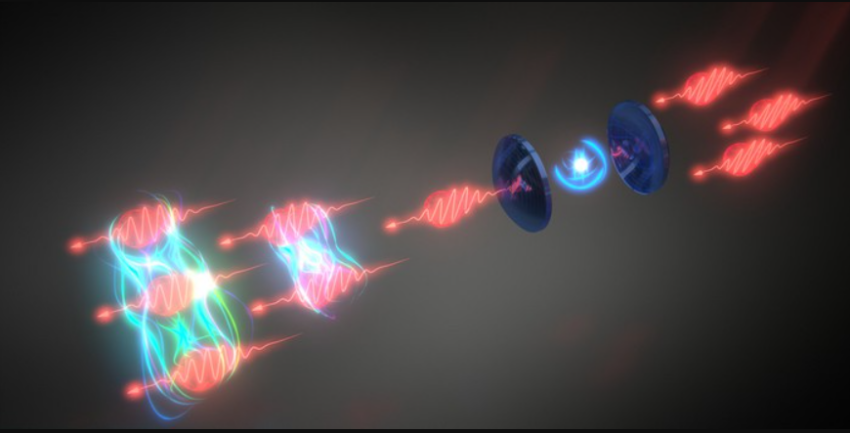Individual photons and a pair of bound photons have been observed interacting with a single quantum dot differently. This could enable unusual photonic state manipulation for quantum-enhanced measurement, light-based quantum computing, and metrology.
Photons don’t interact readily. For long-distance optical fiber communications, this characteristic provides near-distortion-free information transport at light speed. In some cases, researchers want light to interact. For interferometers, they want to develop light states that make them more sensitive. This requires photon interaction.
Bound states, quasiparticles formed by interacting photons, cause technologically essential physical phenomena like stimulated emission (lasing). However, such states had never been detected directly before.
Inducing strong photon interactions
In the new study, researchers led by physicists Sahand Mahmoodian of the University of Sydney in Australia and Natasha Tomm of the University of Basel in Switzerland observed these states by guiding pulses of very dim laser light into a quantum-dot cavity system via a circulator. The circulator backscatters and directs the light to a Hanbury Brown-Twiss setup with single photon detectors that record photon impact times.

According to Mahmoodian, pulses can have zero, one, or two photons, however the likelihood of one photon is substantially higher than two. The intensity of the pulse packet is dominated by the one-photon part since the two-photon part is significantly less. The second-order correlation function of light allows us to measure the possibility of two photons arriving at the detectors within a relatively little time difference.
One photon is delayed by two.
Nature Physics describes a measurement method that only records the two-photon half of the pulse since it is insensitive to single photons. Compared to the one-photon state, the two-photon state was delayed less. Since their technology causes such strong photon interactions, they could discern the difference between one photon interacting with their system and two. The two-photon bound state is formed by this intense photon–photon interaction.
Tomm says, “To measure single photons, we measure its time of arrival at just one of our detectors.” “To measure the correlation between two photons, we measure their arrival times at two detectors. If there is only one photon, only one detector “clicks” and the other does not, hence the “correlation” between the two detectors is null. This measurement is insensitive to single-photons because we employ two detectors. If there’s one photon, one detector clicks.”
Mahmoodian says, “Being able to see one photon and two photons interacting differently with a quantum dot (which behaves essentially like a single artificial atom) basically means we are doing nonlinear optics with just two photons.” He tells Physics World, “By demonstrating that we can identify and manipulate such photon-bound states, we have taken a vital first step towards harnessing quantum light for practical use.”
According to the researchers, such quantum states of light can be used to make more sensitive measurements with better resolution using fewer photons, which could be important for biological microscopy, where high-intensity light can damage delicate samples and the features being observed are particularly small.
Mahmoodian adds, “Our platform is very flexible.” “It is an almost ideal interface between light and matter at the quantum scale and could be used to generate a variety of different types of quantum light for applications like quantum-enhanced communication, metrology, or computation.”
He claims such a device might be used to realize unique photon states for “fault-tolerant” quantum computers. “This is a future research direction.”

